We hope that each of you, our readers, will enjoy and appreciate this article we present about these 5 Astounding Spiders of Asia. It was certainly our great pleasure to compile the information for you. May it provide you with both education and increased awareness.
Yet, these few species listed herein represent only a portion of the natural wonders found throughout the region. It’s our belief, though, that they serve as excellent representations of the wonders found here. Check out some of our other articles for similar marvels.
Giant Golden Orb Weaver
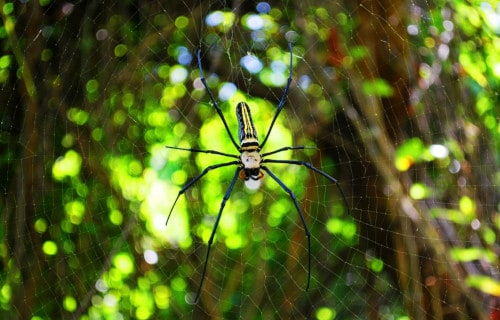
Giant Golden Orb Weaver Facts
- Leading off this article about these 5 Astounding Spiders of Asia we present the dazzling invertebrate named the Giant Golden Orb Weaver.
- This product of Nature and evolution most frequently goes by this descriptive common name. The remarkable animal also has another, very similar name, though. That’s the term northern golden orb weaver. But, whatever one calls it, it’s impressive.
- The term used also varies across its native range. Among scientific professionals, however, it’s typically referred to by its formal title. Most such specialists know this variety of golden orb weaver spider by the technical moniker of Nephila pilipes.
- Johann Christian Fabricius made the first acknowledgement of the arachnid as a separate and distinct species. This scientifically noteworthy deed the student of Carl Linnaeus accomplished in 1793. Since then, nine subspecies have been recognized.
- For the moment, this wonder of the invertebrate world further appears to be in a much better position than many species around the world. That’s due to the fact that it seems to be maintaining a population base that’s equally sizeable, sufficient, and stable.
- That fortunate situation further seems to hold true across the entirety of its range. Due to this, the IUCN presently lists the Giant Golden Orb Weaver as Least Concern. That status is reflected on the organization’s published Red List of Threatened Species.
- The intriguing arachnid nevertheless faces some factors that could eventually pose a threat to it. Habitat loss and degradation, largely due to human activities, rank among these. Its greatest potential threat, however, likely comes from climate change.
Giant Golden Orb Weaver Physical Description
The remarkable Giant Golden Orb Weaver easily impresses and intrigues those who encounter it. Although the Arthropod does so for several reasons, its sheer size clearly ranks high among them. That’s because it’s one of the largest of all of its close relatives.
In keeping with that, it also manifests a strong degree of the physiological trait of sexual dimorphism, like many arachnids. In its case, this characteristic primarily manifests itself in terms of sheer size. More precisely, the female of the species literally dwarfs the male!
Females of the species typically reach a body length equaling roughly 2 in (5 cm). That body also develops as highly elongated. Along its length, the body varies in width from 0.4 – 0.6 in (1.0 – 1.5 cm). Her legspan, however, typically measures a relatively enormous 6 in (15 cm)!
Males, meanwhile, remain quite tiny in comparison. That holds true given the fact that few individuals of that gender attain a body length beyond 0.25 in (0.64 cm). Its legspan also remains equally small in comparison, rarely exceeding 2 in (5 cm) in this specific aspect.
Otherwise, both genders of the Giant Golden Orb Weaver vary little in general outward appearance. The main exception to this is the coloring of the legs. Those of the female present a combination of yellow and black. Those of the male, though, show a light brown.
In terms of other color patterns, individuals vary significantly, with no regard to gender. The shades presented run from violet, to silver-gray, to various shades of brown. Males also develop small hairs on their legs, while most of the adult females lack these entirely.
- Kingdom: Animlia
- Phylum: Arthropoda
- Class: Arachnida
- Order: Araneae
- Family: Araneidae
- Genus: Nephila
- Species: N. pilipes
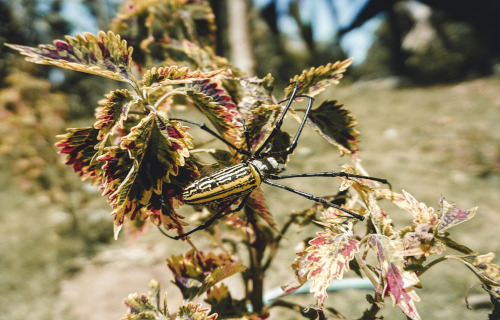
Giant Golden Orb Weaver Distribution, Habitat, and Ecology
Luckily for the Arthropod, the Giant Golden Orb Weaver evolved as native a comparatively broad swathe of the globe. That zone of habitation also happens to be a general region shared by numerous other amazing species. It’s unknown if it ever appeared anywhere else.
That statement holds true partly because it evolved in a region that includes parts of the continent of Asia. There, it makes its home in the east and southeast portions of the area. Yet it also lives in other parts of the general region known as Oceania, including in Australia.
Wherever it makes its home, though, the remarkable arachnid displays strong preferences regarding its exact habitat. As a general principle, it only resides in areas or relatively high moisture, for one. Yet it also strongly prefers that area to also have little or no direct sunlight.
In parts of its range, this frequently includes regions of rainforest. Most often, in all parts of its habitation range, it most commonly lives comparatively near the coast. That’s due to the greater level of overall precipitation. It also appears in parks and even private yards.
The magnificent Giant Golden Orb Weaver generally constructs its large webs in trees or larger bushes. It also creates these structures against buildings or other large features of the terrain. In most of these locations, though, it requires relatively close surface water.
It also evolved as highly choosy in its diet, unlike most spiders. In fact, it only feeds on a few species. It even goes so far as to remove some insects from its web! The spider avoids insects that exude certain unpleasant compounds. It mainly feeds on somewhat larger prey.
Kerengga ant-like jumper
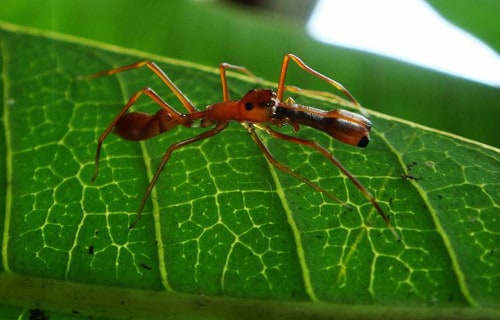
Kerengga ant-like jumper Facts
- Next up among our choices for inclusion in this compendium of 5 Astounding Spiders of Asia we give you the remarkably evolved Kerengga ant-like jumper.
- This remarkable invertebrate bears the cumbersome common name due to its descriptive elements. Though this term’s a mouthful, it’s nothing compared to the scientific name of the creature. That’s because its technical name is Myrmaplata plataleoides.
- Neither name rolls off the tongue easily, to be certain. Each also fails to properly prepare one for a startling fact, though one of them does provide a hint. That’s true because this creature isn’t an ant at all. In fact, it’s actually an incredibly evolved spider!
- The respected English clergyman and zoologist, Octavius Pickard-Cambridge made the first recorded scientific notation of the astonishing arthropod. He further accomplished this action in the year 1869, earning a respected spot in the halls of science.
- Fortunately for it, the amazing arachnid appears to have a population that’s both stable and sufficient in size. That status also appears to hold true throughout the entirety of its natural range. The IUCN, therefore, has no listing for it on the organizations Red List.
- The Kerengga ant-like jumper nevertheless does face several potential threats to its existence. In this respect, however, it’s only mirroring the situation faced by countless other forms of life around the planet. Both involve its habitat and environment.
- In its case, much like many other creatures, potential loss of habitat forms an ever-present danger. This holds especially true given its range. This likely presently forms its greatest threat. Like all other species, though, it’s also vulnerable to climate change.
Kerengga ant-like jumper Physical Description
The breathtaking work of evolution and Nature known as the kerengga ant-like jumper truly merits appreciation. That appreciation, however, isn’t earned solely for its distinctive form. In point of fact, this remarkable arthropod displays several very fascinating attributes.
It bears noting, first of all, that like many related species, it displays the physiological characteristic known as sexual dimorphism. In its case, however, this attribute manifests itself in not one, but in several ways. This arachnid truly takes camouflage to the next level.
Males of the species typically attain a greater overall length than their female counterparts. These reach an average body length measuring 0.35 – 0.47 in (9 – 12 mm). The females of the species, meanwhile, typically attain measurements of roughly 0.24 – 0.28 in (6 – 7 mm).
Coloring also varies between the genders. Males more commonly display various shades of light and dark brown. The females, on the other hand, generally display much lighter and more uniform shades. Both have two small dark patches on the head, resembling eyes.
The Kerengga ant-like jumper carries its camouflage even further, though. The body itself preseents the illusion of segmentation, like that of an ant. In reality, its abdomen and cephalothorax are simply constricted. Its two front legs also resemble an ants’ antennae.
- Kingdom: Animalia
- Phylum: Arthropoda
- Class: Arachnida
- Order: Araneae
- Family: Salticidae
- Genus: Myrmaplata
- Species: M. plataleoides
Kerengga ant-like jumper Distribution, Habitat, and Ecology
One factor helping the Kerengga ant-like jumper to survive in this time of climactic upheaval is its distribution. That’s due to the fact that it evolved as native to a comparatively broad section of the globe. More precisely, the spider appears in many regions throughout Asia.
Though present in large sections of the vast continent, the population of this arachnid remains principally confined to the southeastern portion. This primary zone of habitation mainly covers several countries. These consist of India, Sri Lanka, Thailand, and Singapore.
Within that range, though, the vast majority of its numbers make their home in the regions of dense foliage and high precipitation levels. There, though, it further prefers one of two specific locations. These consist of either bushes or trees, of various local species.
That specific preference exists because of its camouflage. Its appearance strongly mimics local weaver ants, who make their colonies in the same locations. The creature thereby gains a measure of protection from its own predators, most of whom shy away from the ants.
The Kerengga ant-like jumper itself also avoids the ants, and does not prey on them. Instead, it ambushes other small prey in its hin web. Its mimicry even exends to moving like the ants, including waving its two front legs, copying the motion of the ant’s two antennae.
As its name implies, this marvelous arachnid evolved as a variety of what’s known as a jumping spider. This particular species, however, rarely employs that distinctive method of locomotion. To maintain its camouflage, it only jumps if it finds itself greatly imperiled.
Black Widow
Black Widow Facts
- The breathtaking Black Widow holds down the third position in this listing of 5 Astounding Spiders of Asia, though only due to random selection.
- Perhaps most notably for most individuals among us, the amazing creature represents a very dangerous variety of spider. Placed in the Latrodectus genus, many of these reclusive arachnids are also known to some people simply as widow spiders.
- Experts also currently list 32 known species in this genus, spread throughout much of the world. The three species endemic to North America remain the most commonly known, though. Each of these arachnids shares many physical traits.
- The common name for these dangerous invertebrates derives from the high prevalence of sexual cannibalism in the Black Widow. After mating the larger female commonly, though not always, kills and then feeds on the smaller male.
- The toxin of its bite further remains considered by most experts to be especially dangerous. The invertebrate earns this distinction due to the presence of the neurotoxin latrotoxin. This represents an especially dangerous type of venom.
- Only the bite of the female typically presents any danger to humans, however. That’s because she generally has far larger venom glands than her much smaller male counterpart. Despite its reputation, though, few bites actually result in fatalities.
- Presently, the majority of species grouped under this common name continue to have stable populations. The IUCN, therefore, does not list them on its Red List. These amazing spiders nevertheless face the same threat from climate change as we all do.
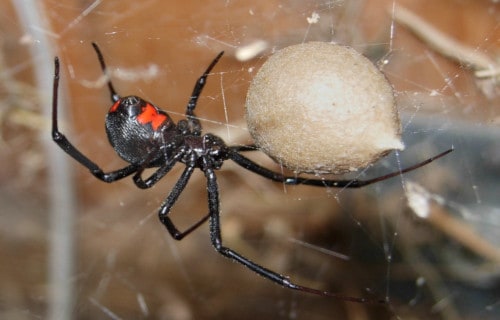
Black Widow Physical Description
Not surprisingly, the various species of Black Widow attain similar physical sizes. However, this remarkable arachnid typically displays a significant amount of sexual dimorphism. This physiological characteristic manifests itself in terms of both color patterns and size.
That’s partly because the female attains an average length of about 1.4 in (3.5 cm), whereas the male stays much smaller. He most commonly only reaches an average length of roughly 0.7 in (1.75 cm). The males also do not display the characteristic red hourglass.
Color patterns also vary relatively significantly between the various forms. All members of this genus, however, appear predominantly black in color. The females of each species, though, all display a very prominent red hourglass shape on their abdomens.
- Kingdom: Animalia
- Phylum: Arthropoda
- Class: Arachnida
- Order: Araneae
- Family: Theridiidae
- Genus: Latrodectus
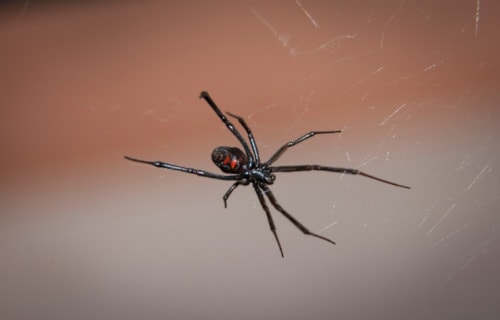
Black Widow Distribution, Habitat, and Ecology
The three species of Black Widow that evolved as native to North America remain the best known of the varieties. The incredible genus also thrives in many other areas of the world, though. In fact, the various species inhabit every continent of the world, except Antarctica.
Quite understandably, given its nearly global distribution, habitat types vary widely. Nevertheless, members of the genus most commonly live in temperate and tropical climates. A few of them, though, even live in extremely arid regions of the world.
Individuals usually build their webs in locations such as around rubble, small trees and bushes, in the wild. But, when found inside of human habitations, webs usually appear in isolated areas, such as attics and garages. This fortunately makes encounters rare.
When a human gets bitten, the venom of a Black Widow commonly causes a condition known as latrodectism. Experiences include profuse sweating, vomiting, muscle rigidity, and extreme pain. These symptoms typically persist for 3-6 days, but can last longer.
All currently known members of this genus hunt as ambush predators, laying in wait in the web. It feeds opportunistically, making a meal of any small creature caught in its web. Its diet, however, typically consists of mosquitoes, grasshoppers, beetles, and such.
Signature Spider
Signature Spider Facts
- The next marvel of evolution appearing in this compilation of 5 Astounding Spiders of Asia is the intriguing creature known as the Signature Spider.
- The commonly used term that we’ve applied here serves as the common name for any arachnid in the genus Angiope. Currently, scientists recognize 75 members of this impressive genus. That may change, however, as new species become recognized.
- That attention-grabbing common name comes from the four unique zigzag patterns individuals create in the center of the web. Scientists applied the term stabilimentum to these patterns. Many researchers believe these designs serve several purposes.
- These supposed purposes include attracting insects and warning larger creatures of the presence of the web. That would make sense, from a practical standpoint, since the majority of the web typically remains practically invisible to the eye.
- The colorful arachnid also evolved very specific, and highly effective, behavioral patterns. The legs usually get held together in pairs while the spider sits stationary in the web. Therefore, most prey does not recognize the creature as a spider.
- For the moment, most of the various forms of Signature Spider seem to be maintaining large and stable populations. The IUCN, therefore, presently does not list many of them on its Red List. Many, though, no doubt face the ongoing threat of climate change.
Signature Spider Physical Description
Perhaps most notably, the various species of Signature Spider exist in a wide range of sizes and appearances. The various types also exhibit sexual dimorphism in the same manner. That’s due to the fact that each of them display this trait in terms of sheer physical size.
As part of this characteristic, females typically reach several times the size of the males. The females of a few of the largest species, furthermore, attain an impressive leg span of as much as 4 in (10 cm) across. Males, meanwhile, rarely exceed 1 in (2.5 cm) across.
The great majority of the different types of Signature Spider present basically the same color pattern, however. This color scheme consists of a predominantly yellow body, with black legs. The eight legs also grow long and powerful, relative to its body size.
- Kingdom: Animalia
- Phylum: Arthropoda
- Class: Arachnida
- Oder: Araneae
- Family: Araneidae
- Genus: Argiope
Signature Spider Distribution, Habitat, and Ecology
It must be noted and appreciated, first of all, that the remarkable Signature Spider has an extraordinarily wide distribution. That’s because the various species in the genus inhabit nearly every part of the globe. The sole exception to this range consists of Antarctica.
The differing species, therefore, thrive in significantly differing habitats. These include such regions as jungles in the tropical regions, to forests, gardens, and even private yards, in temperate regions. But, most species occur in temperate and tropical climates.
The majority of the different species of Signature Spider also construct their webs roughly 3 ft (1 m) above the ground. Most forms and individuals prefer regions of dense foliage since this also typically means the presence of large numbers of small flying insects.
Though all of them typically prey on very small insects, most remain capable of killing an insect twice their own size. A few of the larger species can also deliver a rather painful bite to a human being. The toxins, though, generally pose no threat to human life.
The pain of the bite, though, occurs simply due to the sheer size of the fangs of the arachnid. This is true because most have absolutely no venom at all. The cause of any pain felt remains consistent even for those few species in the genus that do possess toxins, however.
That’s because the venom of these creatures remains harmless to humans, except for those with relevant allergies or health issues. Finally, the relative toxicity and effectiveness of the venom roughly equals that of the sting of a bee. They’re large but harmless.
Long-Horned Orb Weaver
Long-Horned Orb Weaver Facts
- Closing out this article about these 5 Astounding Spiders of Asia is yet another wondrous work of Nature, the Long-Horned Orb Weaver.
- This incredible arachnid most frequently goes by the appropriate and descriptive common name for well-deserved reasons. The invertebrate does have one other alternate name, however. That’s the equally apt term of the Curved Spiny Spider.
- Meanwhile, professionals, such as researchers, more typically use its formal scientific name to refer to it. That, though, is the somewhat hard to pronounce technical name of the Macracantha arcuata. Whichever name one uses, it’s a remarkable species.
- The visually impressive creation of evolution received its formal name at the hands of the renowned Danish zoologist, Johan Christian Fabricius. He made the first formal acknowledgement of the insect as a separate and distinct species, in the year 1793.
- It stands out from the many other related creatures around the globe in an uncommon way. That’s in its uniqueness. That’s because, for the moment, this species constitutes the only known member of its genus. Further research may change that, however.
- Currently, the Long-Horned Orb Weaver appears to be maintaining a population base that’s both sizeable and stable. This further seems to hold true throughout the entirety of its range. The IUCN, therefore, presently has no listing for it on its Red List.
- This marvel of Nature nevertheless must be considered to be facing several threats to its continued existence. Habitat loss forms an ever-present danger, due to man’s expansion, of course. Its greatest threat, though, likely consists of climate change.
Long-Horned Orb Weaver Physical Description
The magnificent, not to mention distinctive, Long-Horned Orb Weaver easily impresses those fortunate enough to view it. The invertebrate does not, however do so due to sheer physical size. That’s because it’s actually quite tiny, especially compared to some others.
Much like many arachnids, though, it also displays the physiological characteristic of sexual dimorphism. In its specific case, this trait manifests itself in terms of pure physical size. That trait further results in a rather extreme difference in the sizes of the genders.
Among the females, body lengths average 0.8 – 1.0 in (2.0 – 2.6 cm). This measurement, however, narrows to about 0.31 – 0.35 in (0.8 – 0.9 cm) at the waist. The males, meanwhile, only reach a fraction of this size. They measure about (0.15 cm) at the waist.
The body also displays different color patterns between the upper and lower surfaces. The upper surface of the body ranges in color from red, to yellow, to white, or even black. It also displays black spots. The underside of the body, though, shows yellow or orange.
Yet the amazing Long-Horned Orb Weaver stands out for one more reason. That’s the long horn-like structures, displayed only by the females. That’s yet another form of gender-based difference it manifests. These reach many times the length of the body of the arachnid.
- Kingdom: Animalia
- Phylum: Arthropoda
- Class: Arachnida
- Order: Araneae
- Family: Araneidae
- Genus: Macracantha
- Species: M. arcuata
Long-Horned Orb Weaver Distribution, Habitat, and Ecology
Luckily, both for the Long-Horned Orb Weaver itself, and those who appreciate the wonders of Nature, it evolved as native a relatively broad swathe of the globe. That holds true due to the fact that the intriguing Arthropod evolved as native to a large part of Asia.
More precisely, evidence indicates that it developed as endemic to the southern and southeastern portions of the large continent. There, it makes appearances from the countries of India and China in the south, and all the way to Borneo in the southeast portion.
In every region in which it appears, however, it displays decidedly strong preferences in its choice of habitat. The remarkable spider makes its home in regions of either temperate or tropical forest. The majority of specimens seem to live in areas of tropical rainforest.
The females of the species typically construct their nests between the branches of various trees. These they further design with an average width of between 3 – 4 ft (1.0 – 1.2 m). The webs also generally have hollow hubs and white silk beads on their radial threads.
Unlike some spiders, though, the female Long-Horned Orb Weaver rarely sits in her web to await her prey. Instead, she typically waits beneath leaves located nearby. Like most spiders, this species feeds opportunistically, on any species it successfully traps in its web.
From this vantage point the arachnid can wait for its victim, and remain safe from its own predators. These mainly include various types of local birds. The venom of this species, though lethal to smaller creatures, generally poses no known serious threat to humans.

5 Astounding Spiders of Asia
We hope that each of you completely enjoyed reading, and hopefully learning from, this article we’ve written about these 5 Astounding Spiders of Asia. It’s also our sincere hope that doing so has left you with either a new or renewed appreciation for such wonders of Nature.
Unfortunately, however, many of their kindred around the world now find themselves facing strong threats to their continued existence as a species. Many of those dangers, in fact, stem from the actions of mankind. We must do all we can to protect and preserve them all.
Check out our other articles on 7 Beguiling Insects of Bulgaria, Earth’s Many Stunning Waterfalls, 7 Breathtaking Canyons and Gorges, Earth’s Countless Amazing Amphibians
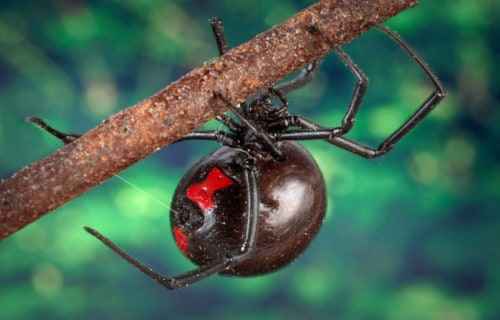
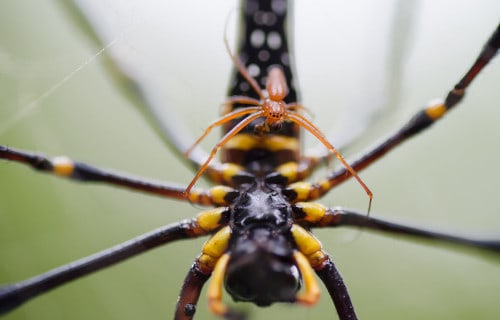
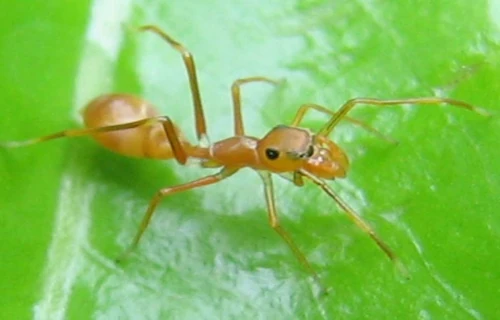
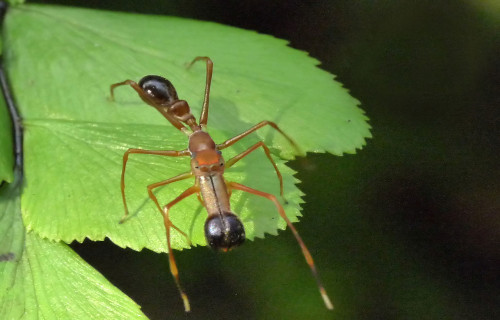
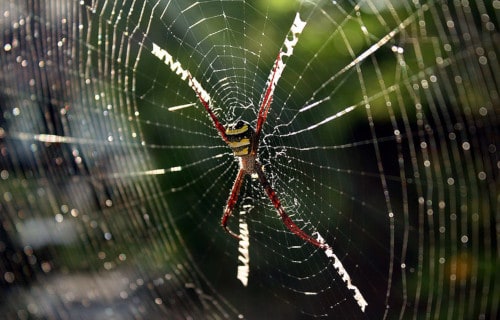
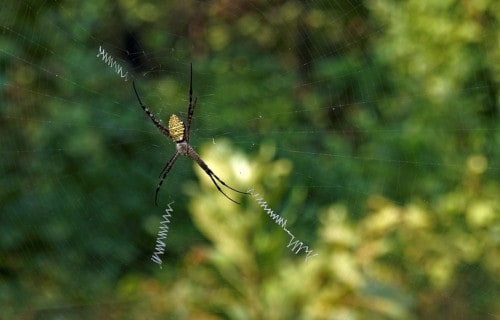
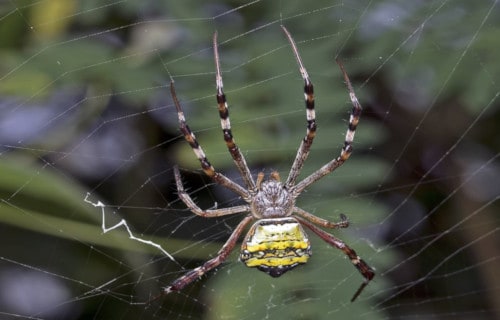
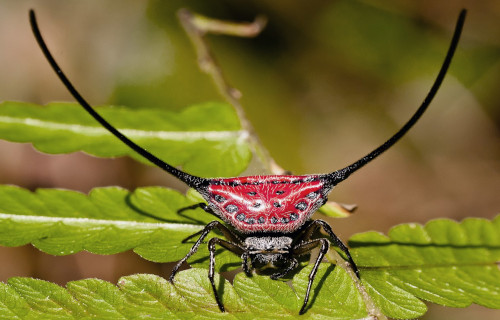
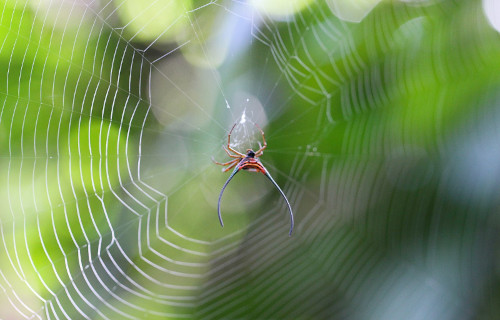









Leave a Reply